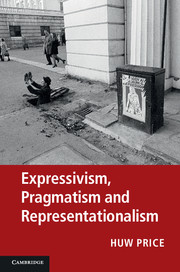Book contents
3 - Pluralism, ‘world’ and the primacy of science
Published online by Cambridge University Press: 05 July 2013
Summary
In the previous lecture, I distinguished two nodes, or ‘attractors’, for the notion of representation, as it figures in contemporary philosophy. One node (‘i-representation’) emphasises position in an inferential or functional network, the other (‘e-representation’) stresses correlation with an aspect of an external environment. I recommended that rather than trying to encompass both nodes in a single account of representation, or to privilege one at the expense of the other, we should simply recognise that they are distinct. There's a legitimate theoretical role for both notions, in other words, but not as the two ends of the same philosophical stage-horse. Better, I urged, to let each notion stand on its own two feet, and to allow them to live their separate lives.
I talked loosely about the idea that i-representations ‘do many jobs’, and I claimed that there is thus a new degree of freedom in a proper theory of language and thought – an extra dimension of variability – which is necessarily invisible in traditional representationalism, when i-representations and e-representations are not distinguished. In this lecture, I want to begin by saying something more about this potential plurality of i-representations – about what it consists in, how the different cases differ from one another. I'll do this by appealing once again to the genetic affinities between the programme I'm recommending and the traditional ‘Humean’ expressivism of writers such as Blackburn. From that point, the rest of the lecture goes like this.
Information
- Type
- Chapter
- Information
- Expressivism, Pragmatism and Representationalism , pp. 45 - 64Publisher: Cambridge University PressPrint publication year: 2013
Accessibility standard: Unknown
Why this information is here
This section outlines the accessibility features of this content - including support for screen readers, full keyboard navigation and high-contrast display options. This may not be relevant for you.Accessibility Information
- 2
- Cited by
